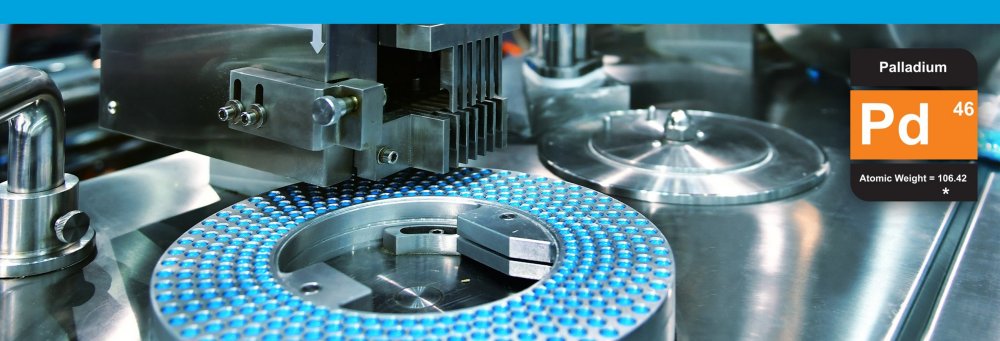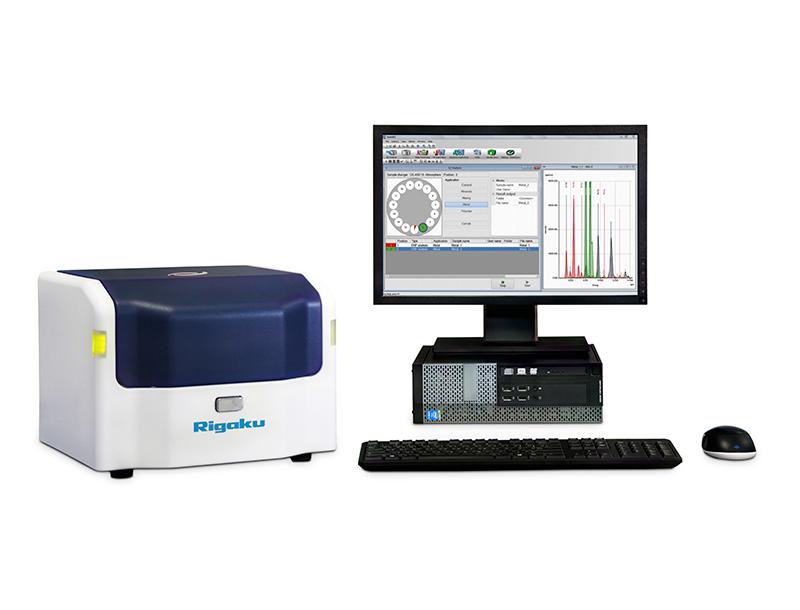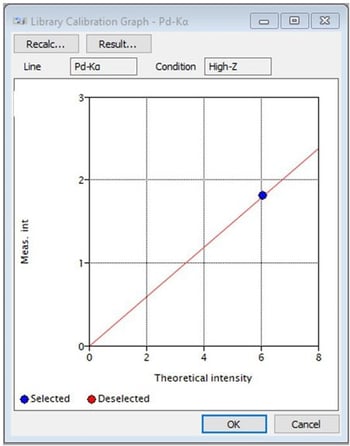Palladium Catalyst in Pharmaceuticals

Scope
The analysis of palladium (Pd) in cellulose powder is demonstrated.
Background
Palladium is a common catalyst in the manufacturing of pharmaceuticals. Pills and tablets are ground to homogeneous powder to test for any retained spent palladium and other heavy metals, such as unwanted cadmium, lead, mercury, and bromine, as part of the quality control process. The Pd is also monitored during the recovery of the catalyst material. Cellulose is a common medium for pharmaceuticals, and testing is often done in pills ground to powder or cellulose powder itself. For quality control and manufacturing purposes, the Rigaku NEX DE EDXRF analyzer is an excellent tool for measuring trace heavy elements and other elements of interest in pharmaceutical products.
 Model: NEX DE
Model: NEX DE
Rigaku RPF-SQX fundamental parameters (FP)
RPF-SQX is an advanced FP that uses advanced profile fitting and theoretical fundamental equations to obtain concentration results without any reference samples. Matching Libraries are easily created by the user and are used in conjunction with the standard FP library in the modeling of a sample matrix and calculation of concentration results. This allows for a semi-quantitative measurement of elemental concentrations without needing a large suite of known assayed calibration standards. Standardless semi-quant is excellent for screening, research, and comparative analyses.
Rigaku matching library approach
 The NEX DE software allows users to easily create their own Matching Libraries to fine-tune semi-quant results. A Matching Library uses one or more samples with known elemental concentrations assayed by a referee technique such as ICP. The theoretical intensities calculated by FP are adjusted to match the intensities of the standard sample and ICP concentration results, optimizing the accuracy of the FP results.
The NEX DE software allows users to easily create their own Matching Libraries to fine-tune semi-quant results. A Matching Library uses one or more samples with known elemental concentrations assayed by a referee technique such as ICP. The theoretical intensities calculated by FP are adjusted to match the intensities of the standard sample and ICP concentration results, optimizing the accuracy of the FP results.
To obtain the results demonstrated, a Matching Library was created using a sample assayed by ICP.
NEX DE results
Results for Pd using Matching Library and semi-quant screening results for other elements of interest.
| Sample ID: Unknown Sample | Units: ppm | ||
| Component | Assay value | NEX DE value | Stat. error |
| Pd | 45 | 48 | 0.8 |
| Si | -- | (13) | 2.8 |
| P | -- | ND | 1.8 |
| Cl | -- | 303 | 1.2 |
| Fe | -- | (2.0) | 0.5 |
| Br | -- | 3.5 | 0.1 |
Discussion
NEX DE uses the standard 10 mm collimator spot size. For smaller sample amounts, NEX DE VS variable spot system is equipped with small spot collimators for the measurement of sample spot 3 mm or 1 mm for Pd above the trace and ultra-low levels.
Accuracy is further improved by the use of more assayed matrix-matched assayed samples. For the highest degree of accuracy in measuring Pd, especially at the low and trace levels, empirical best-fit regression calibration can be made instead of using FP. By the empirical approach, 5 or more accurately and precisely assayed samples that span the Pd concentration range of interest are used to best-fit regression calibration, defining exactly the X-ray sensitivity in relation to concentration.
Conclusion
The results demonstrated here show excellent sensitivity and precision for the measurement of Pd in cellulose powder. Other metals and elements of interest can also be measured in the same application method.
Rigaku Matching Library software allows the user to optimize accuracy using one or more assayed samples, and semi-quant allows for excellent screening with no reference samples. Advanced design features, including variable small spot capability in NEX DE VS combined with simple, intuitive software make NEX DE an excellent tool for quality labs, R&D, and at-line monitoring by non-technical personnel alike.

Contact Us
Whether you're interested in getting a quote, want a demo, need technical support, or simply have a question, we're here to help.
